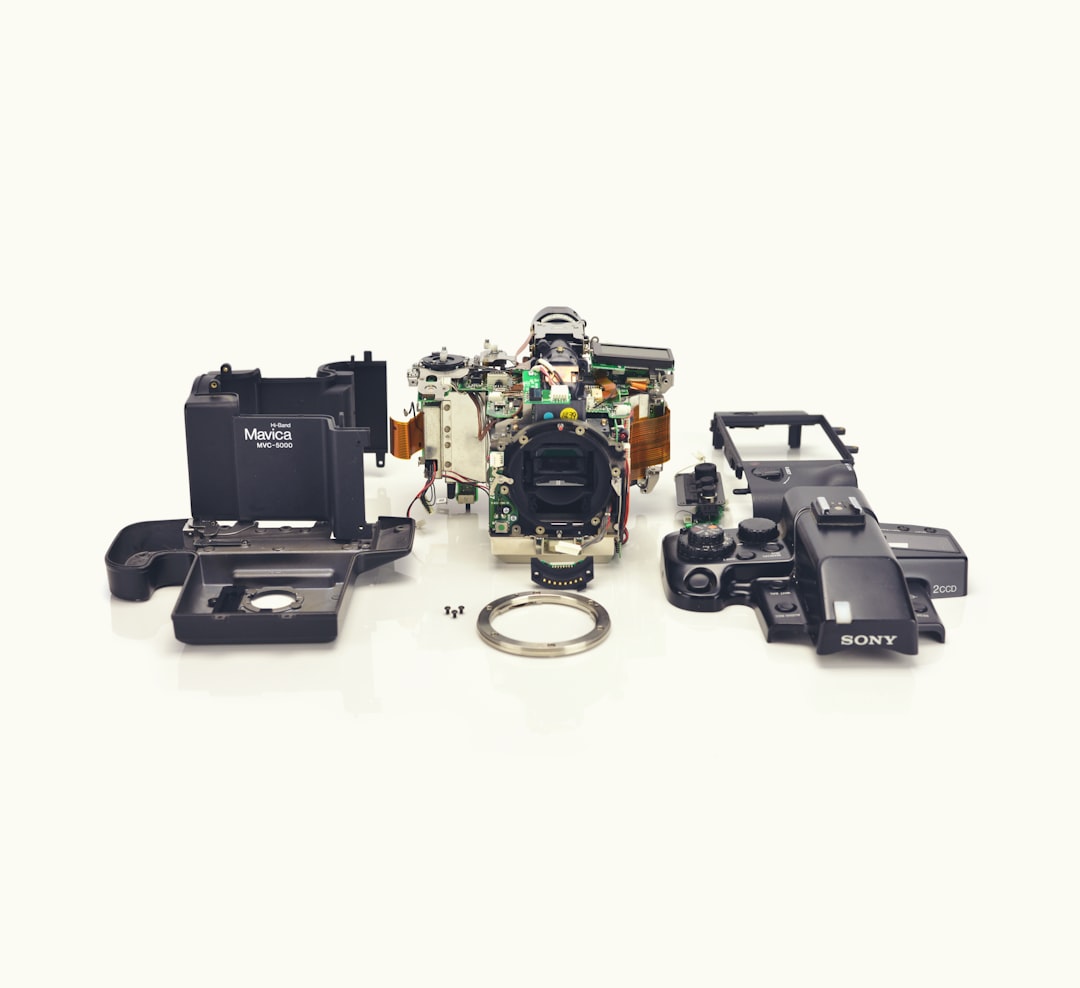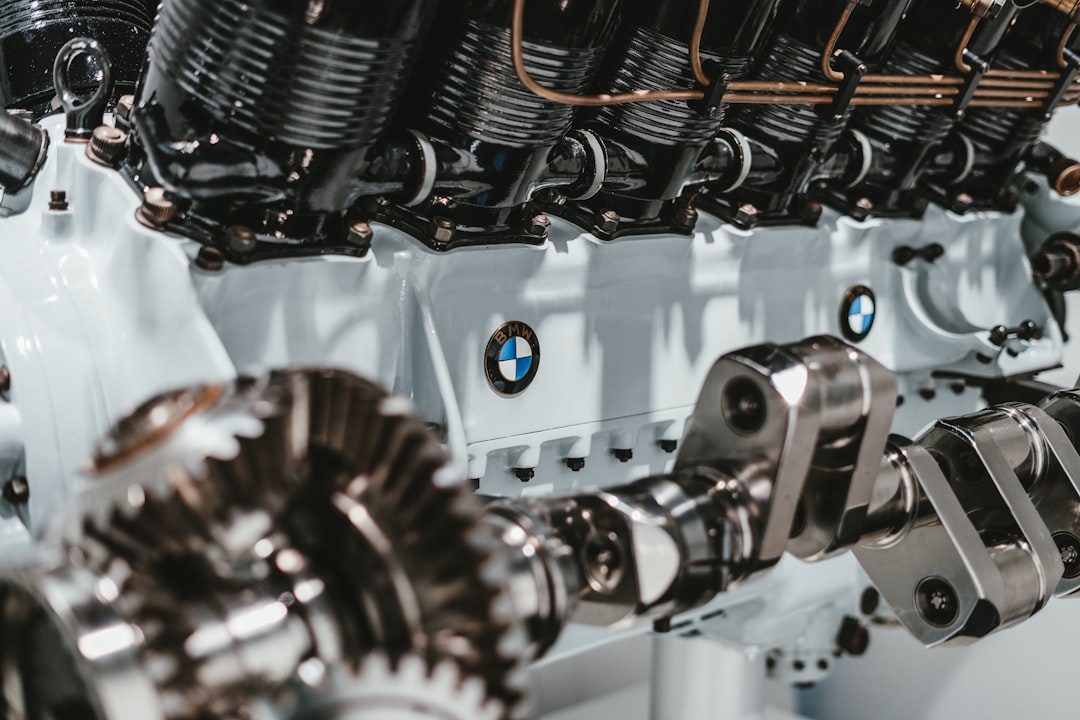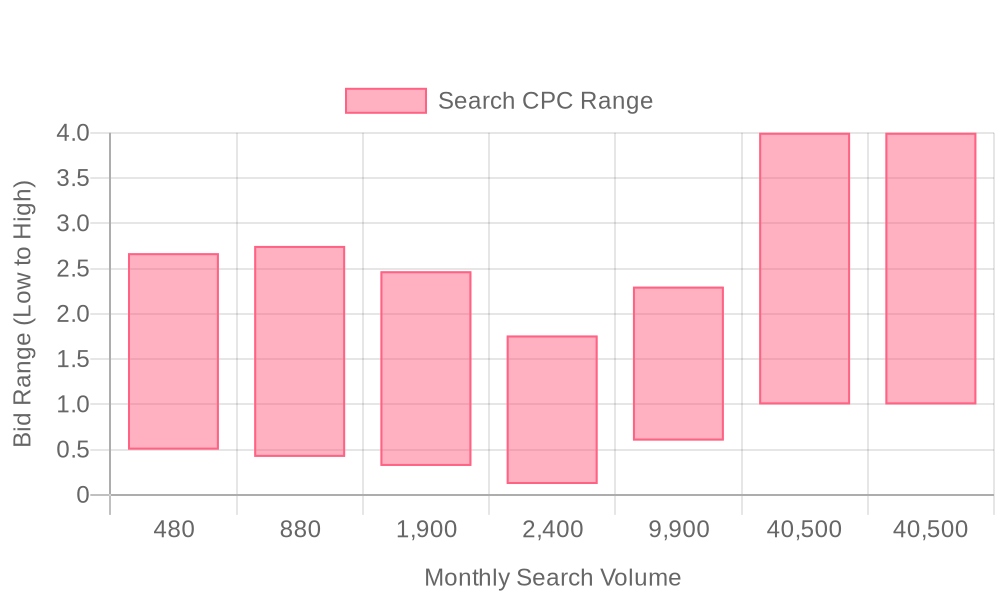
Supercharge your lead generation with a FREE Google Ads audit - no strings attached! See how you can generate more and higher quality leads
Get My Free Google Ads AuditFree consultation

No commitment
Supercharge your lead generation with a FREE Google Ads audit - no strings attached! See how you can generate more and higher quality leads
Get My Free Google Ads AuditFree consultation

No commitment
In the fast-paced world of auto parts supply, reaching the right customers efficiently is critical to staying competitive. Companies in this industry often struggle with navigating the vast landscape of online advertising to effectively target high-intent buyers while optimizing their marketing budget. A common frustration lies in targeting the right audience with precision, as not all website visitors are equal and many merely browse without intent to purchase. Google Ads presents a powerful tool to capture these opportunities, intercepting potential customers at the exact moment they are searching for auto parts solutions. Yet, many suppliers face challenges such as selecting the right keywords, crafting compelling ad copy that resonates with customer needs, and integrating their advertising efforts with existing CRM systems to track performance accurately. This step-by-step guide will help auto parts suppliers harness Google Ads to overcome these challenges by focusing spend on high-intent buyers, maximizing ROI, and building a sustainable online presence that complements their offline efforts.

Auto parts suppliers face a crowded digital landscape where conversion hinges on targeting high-intent buyers and proving measurable ROI. Effective lead generation in this industry relies on structured Google Ads strategies that connect each campaign touchpoint to sales outcomes and customer value. Automotive Google Ads provides a deeper look at this trend.
Top performers align their Google Ads execution with market demand and buyer behavior, using real-time data to allocate budget to the most promising segments. Integrating CRM insights and audience intelligence enables you to prioritize leads with the highest likelihood of purchasing, ensuring every ad dollar is tracked and optimized for maximum impact.
By applying these steps, auto parts suppliers can implement best practices for Google Ads, unify their audience data, and create automotive PPC campaigns that continually optimize for high-value leads and measurable growth.

Auto parts suppliers operate in an environment defined by high buyer intent and intense competition. Google Ads provides a direct line to buyers searching for specific part numbers, fitment details, or urgent replacement solutions, making it possible to capture revenue at the precise moment of need. This channel enables marketers to position their inventory in front of decision-makers when urgency and intent are at their peak, driving conversions that matter.
Advanced targeting capabilities within Google Ads allow suppliers to segment audiences by vehicle type, geographic region, and purchase behavior. This precision ensures budget is allocated to audiences showing clear buying signals, while dynamic updates to audiences reflect real-time changes as leads move through the sales funnel. Auto parts Google Ads strategies provides a deeper look at how auto parts marketers can maximize this segmentation for competitive advantage.
Measuring the effectiveness of each campaign is essential for scaling profitably. As discussed in our Google Ads ROAS tips, integrating both online and offline conversion tracking, along with real-time syncing of CRM and ad platform data, enables teams to identify which campaigns drive actual sales and continuously refine their strategy for maximum profitability.


Auto parts suppliers face a dynamic market with rapidly shifting demand and intense competition. Growth now depends on uncovering new customer segments, optimizing spend, and activating high-value leads with precision and speed.

Auto parts suppliers operate in a highly specialized market where customer needs can differ dramatically by segment. Effective audience segmentation ensures each campaign delivers relevant messaging, boosting engagement and driving higher returns from advertising spend.

| Industry | Keyword | Monthly Search Volume | Competition Level | Low Bid | High Bid |
| Auto Parts Suppliers | auto electrical supplies | 480 | HIGH | 0.5 | 2.67 |
| Auto Parts Suppliers | auto parts suppliers | 880 | MEDIUM | 0.42 | 2.75 |
| Auto Parts Suppliers | car supplies | 1900 | HIGH | 0.32 | 2.47 |
| Auto Parts Suppliers | lkq used parts | 2400 | LOW | 0.12 | 1.76 |
| Auto Parts Suppliers | auto body parts suppliers | 9900 | LOW | 0.6 | 2.3 |
| Auto Parts Suppliers | car parts suppliers | 40500 | LOW | 1 | 4 |
| Auto Parts Suppliers | auto parts manufacturers | 40500 | LOW | 1 | 4 |
Auto parts suppliers see the strongest Google Ads results by using keyword strategies that directly align with buyer intent and product specificity. High-intent, long-tail keywords such as “buy brake pads online,” “OEM Honda Civic alternator,” or “front strut assembly for Ford F-150” deliver higher conversion rates and lower cost-per-acquisition compared to generic terms. These phrases capture customers who are ready to purchase and searching with detailed part information, ensuring ad spend reaches users most likely to convert. For a deeper dive into industry benchmarks and keyword performance, ROAS trends for auto parts provides a look at industry data.
Negative keyword lists are essential for protecting budget and avoiding wasted clicks from irrelevant searches. By excluding terms like “free,” “DIY repair tips,” or mismatched vehicle models, auto parts marketers reduce exposure to low-quality traffic. This approach ensures that campaigns remain focused on qualified, purchase-driven audiences, maximizing return on investment.
Local intent is increasingly important for suppliers with physical locations or regional distribution centers. Incorporating geographic modifiers—for example, “auto parts store near Dallas” or “same-day pickup brake pads Chicago”—enables suppliers to dominate high-value, location-based searches. When these strategies are paired with dynamic audience segmentation, marketers can shift budgets in real time based on surges in local demand, ensuring top placement when buyers are ready to act. Local Google Ads tactics explores specific tactics for managing and scaling local campaigns.
A unified keyword and audience approach ensures consistent messaging across Google Ads, organic search, and other channels. When enriched visitor data and real-time intent signals are integrated into campaign management, teams can identify which companies or buyers are actively in-market, prioritize them, and sync these insights directly into ad platforms and CRM systems. This builds on the strategies outlined in intent retargeting, enabling auto parts suppliers to adapt creative and offers as prospects move through the buying funnel, resulting in measurable lifts in conversion rates and overall Google Ads ROI for auto parts.
A high-performing Google Ads strategy for auto parts suppliers demands precision at every stage, from initial targeting to post-click experience. Teams that excel combine granular audience profiling with agile optimization cycles, ultimately converting intent-rich searches into measurable revenue. The following framework provides a practical, repeatable process for suppliers aiming to maximize Google Ads ROI in the automotive sector.
Effective automotive PPC campaigns begin with comprehensive keyword research, blending service-specific terms, part numbers, and location-based modifiers. By mapping keywords to real purchasing behaviors—such as searches for “OEM brake pads 2019 Honda Accord” or “next-day alternator delivery Los Angeles”—marketers can capture both urgent buyers and high-value commercial accounts. Avoiding generic, high-cost terms keeps budgets focused on audiences most likely to convert.
Advanced platforms allow teams to go beyond simple keyword targeting by associating visitor identity with search intent. Platforms like Sona Identification help marketers pinpoint which companies and buyer personas are landing on their pages, ensuring that ad spend is always directed toward the highest-value prospects. As these insights surface, keyword lists can dynamically evolve, prioritizing in-market segments and adjusting to real-time shifts in demand.
Ad messaging must address the unique pain points of auto parts customers, such as urgency, compatibility, and trust. Crafting copy that highlights inventory accuracy, fast shipping, or exclusive technical support, while referencing specific vehicle models or part numbers, immediately signals relevance. Including callouts like “certified fitment guarantee” or “live expert chat for mechanics” reinforces credibility and drives higher engagement from both DIYers and professional buyers.
As campaigns scale, the ability to test variations in ad copy becomes essential. For more insights on maximizing ad effectiveness in this space, check out the guide on Boost Google Ads ROAS. Automated insights help identify which messages resonate with different audience segments, enabling continuous improvement and higher conversion rates.
Every click from a Google Ads campaign should land users on a page tailored to their search intent and device. For auto parts suppliers, this involves presenting clear fitment details, availability, and frictionless checkout options, all within a mobile-optimized interface. Landing pages that mirror ad group themes—such as “2018–2020 Ford F-150 LED headlamps in stock”—reduce bounce rates and drive faster path to purchase.
Connecting ad, CRM, and analytics data gives suppliers the power to personalize landing page experiences at scale. For example, returning buyers can be greeted with relevant cross-sell offers based on their purchase history, while high-value B2B prospects see tailored bulk pricing or account-specific inventory. See X-Cart’s PPC guide for a deeper look at this trend. This alignment between ad targeting and onsite experience leads to improved user satisfaction and more consistent pipeline growth.
Continuous campaign improvement relies on robust data collection and agile response to performance trends. By monitoring conversion events, cost-per-acquisition, and customer lifetime value, marketers can adjust bidding strategies—such as shifting from manual CPC to Target ROAS as data volume increases—to maximize efficiency. A/B testing of ad creative, bid adjustments by audience and geography, and negative keyword expansion all contribute to ongoing performance gains.
Integrated attribution models enable revenue teams to connect online engagement with offline sales, ensuring campaign ROI is measured holistically. This builds on the strategies outlined in the guide on Revenue Attribution. Real-time audience updates mean that as leads progress through the funnel, remarketing and prospecting efforts automatically adapt, delivering hyper-relevant ads and offers without manual intervention. This level of automation and closed-loop measurement is critical for sustaining growth in the fast-moving auto parts market.
Expanding your auto parts supplier presence requires a multifaceted approach that leverages both digital and data-driven signals to reach buyers at every stage. By connecting insights from search intent, CRM data, and regional trends, suppliers can create meaningful engagement that drives both short-term conversions and long-term growth.
Mastering Google Ads for auto parts suppliers isn’t just about visibility—it’s about precision, efficiency, and driving measurable results. By now, you’ve seen how strategic targeting, compelling ad creatives, and data-driven optimizations can transform your campaigns from costly experiments into high-ROI engines.
Whether you’re struggling to reach the right buyers, optimize your budget, or track conversions, the solutions lie in leveraging intent-based keywords, refining audience segmentation, and continuously testing ad performance. These steps ensure your auto parts business stands out in a competitive digital marketplace.
Imagine turning every click into a qualified lead and every campaign into a predictable revenue stream. With the right approach, Google Ads becomes more than an expense—it’s a growth accelerator for your business. The tools and strategies are within reach; it’s time to put them into action.
Ready to see the difference? Start a free trial to experience Sona's platform and its capabilities.
Best practices include targeting high-intent buyers, integrating CRM insights for precise audience segmentation, optimizing ad copy and landing pages for conversion, and using real-time data to allocate budgets effectively.
Suppliers can effectively target their audience by using high-impact keywords related to specific vehicle parts, refining audience parameters based on intent signals, and leveraging CRM data for personalized targeting.
Budget allocation should focus on high-intent segments, using real-time data to prioritize spending on campaigns with the highest likelihood of conversion, ensuring every ad dollar is tracked and optimized for maximum impact.
Common challenges include selecting the right keywords, crafting compelling ad copy, targeting the right audience, and integrating advertising efforts with CRM systems for accurate performance tracking.
Success can be measured by linking campaign KPIs to revenue, ensuring a direct line between ads and sales, and integrating online and offline conversion tracking with CRM data for comprehensive ROI analysis.
Join results-focused teams combining Sona Platform automation with advanced Google Ads strategies to scale lead generation

Connect your existing CRM

Free Account Enrichment

No setup fees
No commitment required

Free consultation

Get a custom Google Ads roadmap for your business
Join results-focused teams using Sona Platform automation to activate unified sales and marketing data, maximize ROI on marketing investments, and drive measurable growth

Connect your existing CRM

Free Account Enrichment

No setup fees
No commitment required

Free consultation

Get a custom Google Ads roadmap for your business
Over 500+ auto detailing businesses trust our platform to grow their revenue
Join results-focused teams using Sona Platform automation to activate unified sales and marketing data, maximize ROI on marketing investments, and drive measurable growth

Connect your existing CRM

Free Account Enrichment

No setup fees
No commitment required

Free consultation

Get a custom Google Ads roadmap for your business
Over 500+ auto detailing businesses trust our platform to grow their revenue
Join results-focused teams using Sona Platform automation to activate unified sales and marketing data, maximize ROI on marketing investments, and drive measurable growth

Connect your existing CRM

Free Account Enrichment

No setup fees
No commitment required

Free consultation

Get a custom Google Ads roadmap for your business
Over 500+ auto detailing businesses trust our platform to grow their revenue
Join results-focused teams using Sona Platform automation to activate unified sales and marketing data, maximize ROI on marketing investments, and drive measurable growth

Connect your existing CRM

Free Account Enrichment

No setup fees
No commitment required

Free consultation

Get a custom Google Ads roadmap for your business
Over 500+ auto detailing businesses trust our platform to grow their revenue
Our team of experts can implement your Google Ads campaigns, then show you how Sona helps you manage exceptional campaign performance and sales.
Schedule your FREE 15-minute strategy sessionOur team of experts can help improve your demand generation strategy, and can show you how advanced attribution and data activation can help you realize more opportunities and improve sales performance.
Schedule your FREE 30-minute strategy sessionOur team of experts can help improve your demand generation strategy, and can show you how advanced attribution and data activation can help you realize more opportunities and improve sales performance.
Schedule your FREE 30-minute strategy sessionOur team of experts can help improve your demand generation strategy, and can show you how advanced attribution and data activation can help you realize more opportunities and improve sales performance.
Schedule your FREE 30-minute strategy sessionOur team of experts can help improve your demand generation strategy, and can show you how advanced attribution and data activation can help you realize more opportunities and improve sales performance.
Schedule your FREE 30-minute strategy session





Launch campaigns that generate qualified leads in 30 days or less.
